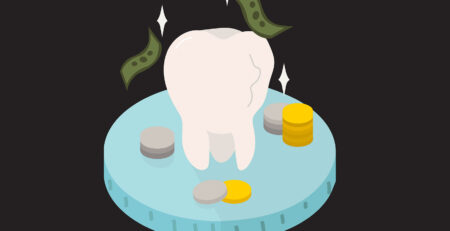Signs You Might Need a Root Canal: A Detailed Exploration
Recognizing the signs that indicate a need for root canal treatment (RCT) can make all the difference in addressing dental issues before they escalate into more severe conditions. Root canal treatments are often necessary when the pulp (the soft tissue inside the tooth containing nerves, blood vessels, and connective tissue) becomes inflamed or infected. If left untreated, such conditions can lead to persistent pain, tooth loss, or even systemic infections that affect your overall health.
Root canals, often viewed with fear due to misconceptions, can be relatively simple and pain-relieving procedures when performed by an experienced dentist or an endodontist. In this section, we will explore six common signs that suggest you might need a root canal. This in-depth guide will help you understand each symptom, its potential cause, and why a root canal might be the right solution for your dental problem.
1. Persistent Tooth Pain
Description:
Persistent or severe tooth pain is one of the most common indicators that a tooth’s pulp is damaged or infected. This pain can be constant, or it might come and go, but typically it intensifies over time. Unlike other types of dental discomfort, tooth pain caused by an infection in the pulp tends to be deep and throbbing, and it may radiate to other areas of the face, jaw, or even the ear. The intensity of the pain can vary depending on the position of the tooth and the severity of the infection, but it usually doesn’t resolve on its own without intervention.
What Causes Persistent Tooth Pain?
Tooth pain that persists is often related to the damage in the soft tissue within the tooth, known as the pulp. The pulp may become inflamed or infected due to several factors:
- Deep Decay (Cavities): When cavities penetrate the tooth enamel and dentin, they can reach the pulp, leading to infection and pain.
- Cracked or Chipped Teeth: A crack or chip can expose the pulp, causing inflammation and pain.
- Repetitive Dental Procedures: Multiple procedures on a single tooth can irritate the pulp, resulting in pain and the need for a root canal.
- Trauma: A traumatic injury can lead to pulp damage, even if the tooth shows no visible cracks or chips.
What to Do:
If you experience persistent tooth pain that doesn’t improve with over-the-counter pain relievers, it’s crucial to consult a dentist or endodontist (a specialist in root canals). This type of pain typically suggests damage or infection to the tooth’s nerve or surrounding tissue, and ignoring it may lead to further complications such as abscesses, gum disease, or tooth loss. A timely diagnosis and root canal treatment may be necessary to relieve the pain and save the tooth.
2. Prolonged Sensitivity to Hot or Cold
Description:
Sensitivity to hot or cold food and beverages is relatively common. However, if you notice that this sensitivity lingers long after you’ve removed the stimulus—such as drinking hot coffee or eating ice cream—this could indicate a problem inside the tooth. The sensitivity might start as mild discomfort but can intensify over time, becoming more painful and lasting longer after exposure to heat or cold. In some cases, the pain may become so severe that even breathing in cold air can trigger discomfort.
What Causes Prolonged Sensitivity?
The underlying cause of prolonged sensitivity is often damage to the pulp or nerve inside the tooth. This sensitivity occurs when the enamel or dentin is compromised, allowing stimuli to reach the nerve endings in the pulp. Some common causes include:
- Enamel Erosion: Over time, the protective enamel of your teeth can wear away, exposing the dentin, which is more sensitive.
- Tooth Decay: As cavities get larger, they can expose the nerve, causing sensitivity.
- Gum Recession: Receding gums can expose the roots of your teeth, which are more sensitive to temperature changes.
What to Do:
If your sensitivity to hot or cold becomes prolonged or severe, it’s essential to visit a dental clinic for an evaluation. This type of sensitivity could indicate that the tooth’s pulp is inflamed or infected. A root canal might be needed to address the issue by removing the damaged pulp and sealing the tooth to prevent further discomfort.
3. Swelling and Tenderness
Description:
Swelling in the gums, jaw, or even the face, accompanied by tenderness around a specific tooth, is a strong indicator of an infection or abscess that may require a root canal. Swelling can range from mild to severe, and it may be constant or fluctuate in intensity. In some cases, the swelling may be accompanied by a tender lump or bump on the gum near the affected tooth, which may feel sore to the touch.
What Causes Swelling and Tenderness?
Swelling and tenderness often occur when the infection in a tooth’s pulp spreads beyond the tooth’s root and begins to affect the surrounding tissue. Common causes include:
- Abscess Formation: A tooth abscess is a pocket of pus that forms at the root of the tooth due to bacterial infection. This can lead to swelling, tenderness, and even fever.
- Pulpitis: Inflammation of the tooth pulp, known as pulpitis, can cause the surrounding tissue to swell and become tender.
- Gum Infection: The infection may spread from the tooth to the gums, causing swelling and tenderness.
What to Do:
Swelling and tenderness are warning signs of a severe infection. If left untreated, the infection can spread to other areas of the mouth, jaw, or even the bloodstream, leading to systemic health issues. Seek dental care immediately if you experience swelling or tenderness. A root canal treatment is often necessary to remove the infected pulp and prevent the infection from spreading further.
4. Discoloration of the Tooth
Description:
A tooth that becomes discolored or darkens in color without any apparent cause is a sign that the pulp inside the tooth is damaged or dead. While teeth can change color for several reasons, such as staining from food, drinks, or smoking, a sudden or unexplained change in color—especially if the tooth turns gray, brown, or black—suggests internal damage. Unlike surface staining, this type of discoloration originates from within the tooth.
What Causes Tooth Discoloration?
Tooth discoloration is often the result of trauma or decay that affects the pulp. Common causes include:
- Trauma: A blow to the tooth can damage the blood vessels inside, leading to internal bleeding and a change in color.
- Infection or Decay: An infection or decay that reaches the pulp can cause the tooth to die, resulting in a darker appearance.
- Pulp Necrosis: When the pulp inside a tooth dies, the tooth may turn a grayish color due to the breakdown of tissue.
What to Do:
Tooth discoloration, especially if accompanied by other symptoms such as pain or sensitivity, should not be ignored. This discoloration is often a sign that the pulp is damaged or infected, and a root canal may be required to remove the affected tissue and restore the tooth’s appearance. The sooner the issue is addressed, the better the chances of saving the tooth.
5. Pain When Chewing or Biting
Description:
Pain when chewing or biting down is another common sign that a root canal may be needed. This pain can be sharp and sudden, or it may feel like dull pressure. You might notice that the pain worsens when you apply pressure to the tooth, or it could be present only when chewing certain types of food. In some cases, the pain may be localized to one tooth, while in others, it could radiate to surrounding areas.
What Causes Pain When Chewing or Biting?
Pain during chewing or biting is usually caused by damage to the tooth’s structure or inflammation in the pulp. Here are some common causes:
- Cracks or Fractures: A crack in the tooth can expose the sensitive pulp or nerve, causing pain when pressure is applied.
- Pulp Infection: Infections in the pulp can lead to inflammation and pain, especially when chewing or biting.
- Loose Fillings or Crowns: If a filling or crown becomes loose, it can expose the sensitive parts of the tooth, leading to discomfort.
What to Do:
If chewing or biting causes pain, it’s essential to consult a dentist as soon as possible. This type of pain could indicate an underlying infection or damage that requires a root canal. Delaying treatment can lead to more severe damage and the need for more extensive dental work, such as extraction or implants.
6. Recurring Abscesses
Description:
Abscesses or pus-filled sacs that form at the root of a tooth are a serious sign of infection. Abscesses can cause severe pain, swelling, and a foul taste in the mouth. You may also experience fever or a general feeling of being unwell if the infection spreads. In some cases, an abscess may drain on its own, providing temporary relief, but the infection will persist until it is treated.
What Causes Recurring Abscesses?
Abscesses are usually the result of a bacterial infection in the tooth’s pulp. This infection can spread to the surrounding bone and gum tissue, forming a pus-filled sac. Causes of abscesses include:
- Deep Decay or Cavities: Untreated cavities that reach the pulp can lead to infection and abscess formation.
- Trauma: An injury to the tooth can expose the pulp to bacteria, leading to infection.
- Previous Dental Work: In some cases, poorly done or incomplete dental procedures can lead to abscesses.
What to Do:
Recurring abscesses require immediate dental attention. A root canal treatment is often necessary to treat the infection and remove the abscess. If left untreated, the infection can spread to other parts of the body, leading to serious health complications. In severe cases, tooth extraction may be necessary if the tooth cannot be saved.
Conclusion: When to Seek Help
If you experience any of these signs, it’s important to seek prompt dental care. Root canal treatment may be necessary to address the issue, alleviate pain, and prevent the spread of infection. Whether you’re dealing with persistent pain, sensitivity, swelling, or discoloration, the earlier you seek treatment, the better your chances of preserving your natural tooth and maintaining your oral health.
In Delhi, there are numerous qualified specialists who can provide expert root canal treatment. Finding an experienced RCT specialist in Delhi ensures that you receive the highest quality care and the best possible outcome for your dental health. Don’t wait until the symptoms worsen—schedule a consultation with a professional to determine if a root canal is right for you.






Leave a Reply